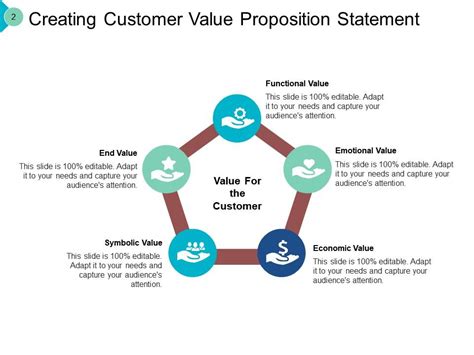Gold’s Intrinsic Value: A Timeless Asset in 2025
Gold, a precious metal renowned for its captivating luster, exceptional malleability, and resistance to corrosion, has long captivated humanity. Its enduring allure stems not only from its aesthetic appeal but also from its inherent value, which has transcended time and cultures. This article delves into the multifaceted intrinsic value of gold, exploring its historical significance, economic implications, and enduring appeal in the face of evolving markets and technological advancements.

Gold has been a valued commodity throughout history, serving as a medium of exchange, a store of value, and a symbol of wealth and power. Its role in ancient civilizations, such as Egypt, Mesopotamia, and Greece, is well-documented in archaeological artifacts and historical texts. Gold’s durability, portability, and scarcity made it an ideal medium for facilitating trade and storing wealth. Kings and emperors accumulated vast troves of gold to display their power and solidify their legitimacy.
In the modern era, gold retains its economic significance, acting as a safe haven during periods of financial uncertainty. Central banks around the world hold significant gold reserves as a hedge against inflation, currency fluctuations, and economic downturns. Gold’s intrinsic value is also reflected in its use as a global currency reserve, providing a foundation for international monetary stability.
The Global Gold Market
The global gold market is vast, with an estimated value of over $13 trillion. Major gold producers include China, Australia, Russia, and South Africa. Gold is traded on global exchanges, with prices determined by factors such as supply and demand, geopolitical events, and economic projections.
Gold is a finite resource, with new discoveries becoming increasingly rare. The scarcity of gold contributes to its intrinsic value, as its supply cannot be easily increased in response to demand. According to the World Gold Council, the total above-ground stock of gold is estimated at approximately 200,000 tonnes.
Beyond its traditional uses, gold has found applications in various industries. Its exceptional electrical conductivity makes it valuable in electronics, particularly in computer components and mobile phones. Gold is also used in dentistry, jewelry, and medical treatments.
Gold holds emotional and symbolic significance for many. Its luster, malleability, and association with wealth and luxury make it a desirable material for jewelry, watches, and other objects of adornment. Gold is often used to mark life milestones, such as weddings, anniversaries, and cultural celebrations.
Gold’s Value in 2025
Gold’s intrinsic value is expected to remain robust in 2025 and beyond. Factors supporting this include:
- Geopolitical uncertainties: The ongoing global political landscape, marked by tensions between major powers, could drive demand for gold as a safe haven.
- Inflationary pressures: Rising inflation could erode the value of fiat currencies, making gold more attractive as a store of value.
- Growing wealth: The expanding global middle class is expected to increase demand for gold, particularly in emerging markets.
When considering gold’s value, it is important to avoid common mistakes:
- Confusing gold with gold stocks: Gold stocks represent shares in gold mining companies, not physical gold. Their performance may not directly track the price of gold.
- Investing without research: Gold can be a complex investment. It is crucial to research and understand the factors that influence its price before investing.
- Overinvesting: Gold should be considered as part of a diversified portfolio. Overinvesting in gold can increase risk.
Gold’s intrinsic value matters for several reasons:
- Safe haven: Gold provides a hedge against financial uncertainty, offering stability during market volatility.
- Inflation protection: Gold can help preserve wealth against the erosive effects of inflation.
- Portfolio diversification: Gold adds diversification to a portfolio, reducing overall risk.
- Long-term investment: Gold has a history of performing well over the long term, making it a suitable investment for long-term goals.
Investing in gold offers numerous benefits:
- Preservation of capital: Gold’s intrinsic value helps preserve capital during periods of economic uncertainty.
- Diversification: Gold diversifies a portfolio, reducing risk and enhancing returns.
- Liquidity: Gold is a highly liquid asset, easily converted into cash when needed.
- Inflation hedge: Gold acts as a hedge against inflation, protecting the value of savings.
1. What factors influence the price of gold?
- Supply and demand
- Geopolitical events
- Economic projections
- Interest rates
2. Is gold a good investment?
- Gold can be a valuable component of a diversified portfolio, providing a hedge against risk and preserving capital.
3. How can I invest in gold?
- Physical gold (coins, bars)
- Gold ETFs
- Gold mining stocks
4. Is gold a safe haven?
- Gold has a history of performing well during periods of financial uncertainty.
5. What are the risks of investing in gold?
- Price volatility
- Storage costs
- Counterfeiting
6. How much gold should I have in my portfolio?
- The optimal allocation depends on individual risk tolerance and financial goals.
7. What is the future of gold?
- Gold’s intrinsic value is expected to remain robust in the long term, driven by factors such as geopolitical uncertainty, inflation, and growing wealth.
8. What are innovative applications for gold?
- Nanogold: Drug delivery, cancer treatment
- Biocompatible gold: Surgical implants, medical devices
- Optoelectronics: Solar cells, lasers
Gold’s intrinsic value stems from its historical significance, economic utility, emotional appeal, and enduring rarity. As a safe haven, store of value, and portfolio diversifier, gold remains a compelling asset in the evolving global marketplace. Its inherent worth is expected to continue to shine brightly in 2025 and beyond, making it a timeless investment for centuries to come.



